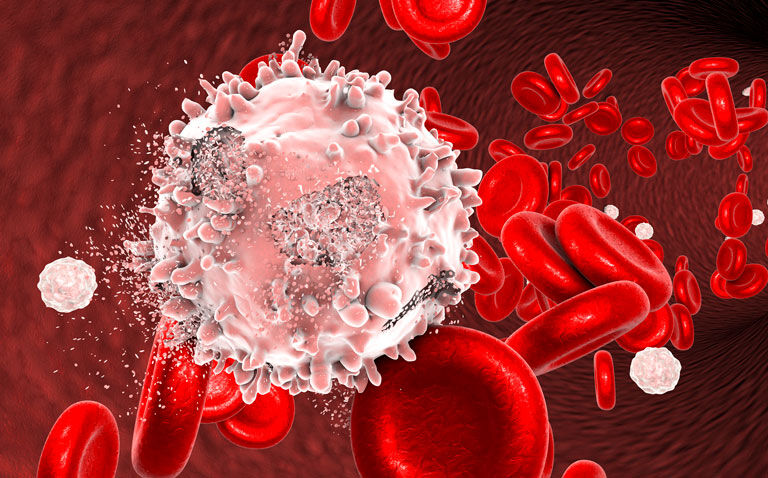Higher tisagenlecleucel doses in children with B cell acute lymphoblastic leukaemia are associated with more favourable disease outcomes.
Higher doses of the CAR T cell therapy tisagenlecleucel lead to better overall, event-free and relapse-free survival in children with relapsed or refractory acute lymphoblastic leukaemia, according to the findings of a retrospective study by US researchers.
Acute lymphoblastic leukaemia (ALL) is a malignant transformation and proliferation of lymphoid progenitor cells in the bone marrow, blood and extra-medullary sites and 80% of cases occur in children. While chemotherapy is used first line, in cases where this initial treatment is either refractory or if patients relapse, chimeric antigen receptor-modified T cells (CAR T-cells) against CD19, have been shown to be effective.
In a phase I-IIa study in paediatric and young adult patients with relapsed or refractory B-cell ALL, the use of a single infusion of tisagenlecleucel provided durable remission with long-term persistence.
The target dose of transfused cells was 2.0 to 5.0 x 106 CAR transduced viable T-cells per kg, for those weighing less than 50 kg and 1.0 to 2.5 x 108 T-cells for those weighing over 50 kg. However, whilst it is an effective therapy, what remains unclear is whether the dose of tisagenlecleucel impacts on disease-related outcomes such as overall survival.
As a result, in the present study, the US researchers decided to retrospectively examine the impact of dose using data from the Pediatric Real World CAR Consortium which collects data from 15 paediatric oncology centres that are using commercial tisagenlecleucel.
The team included patients with relapsed or refractory ALL and divided the infused cell doses into quartiles, D1 (0.1341.300 x 106), D2 (1.301-1.700 x 106), D3 (1.701- 2.400 x 106) and D4 (2.401-5.100 x 106).
Overall survival (OS) was defined as the time from infusion to death from any cause, event-free survival (EFS), the time to the earliest non-response, relapse or death.
Patients who did not respond were considered to have had a EFS event on day 28. Relapse-free survival (RFS) was only defined among responders, as the time from day 28 to relapse.
Tisagenlecleucel and disease outcomes
A total of 180 children with a mean age of 12.6 years (40.3% female) were included in the analysis and the median cell dose was 1.7 x 106 cells/kg and overall, 82.8% of patients had a treatment relapse and 51% described as having a high disease burden.
Overall survival for the entire cohort after 3 years was 58.9% (95% CI 47.6 – 72.9%) and the median follow-up time was 402.5 days. In multivariable regression, those on the highest dose (D4) had a significantly improved survival compared to those in D1, the lowest dose (hazard ratio, HR = 0.22, 95% CI 0.08 – 0.61, p = 0.008).
For EFS, multivariable regression showed that again, those receiving the highest compared to the lowest dose, had improved survival (HR = 0.24, 95% CI 0.12 – 0.49, p < 0.001). Finally, RFS was also greater among those receiving the highest dose (HR = 0.18, 95% CI 0.07 – 0.49, p = 0.002). There were also no differences in toxicity across the different dose ranges.
The authors concluded that as higher doses were associated with superior survival in a real world setting, further work was required to examine the value of using higher tisagenlecleucel dosing.
Citation
Stefanski HE et al. Higher doses of tisagenlecleucel associate with improved outcomes: a report from the pediatric real-world CAR consortium Blood Ave 2022.










